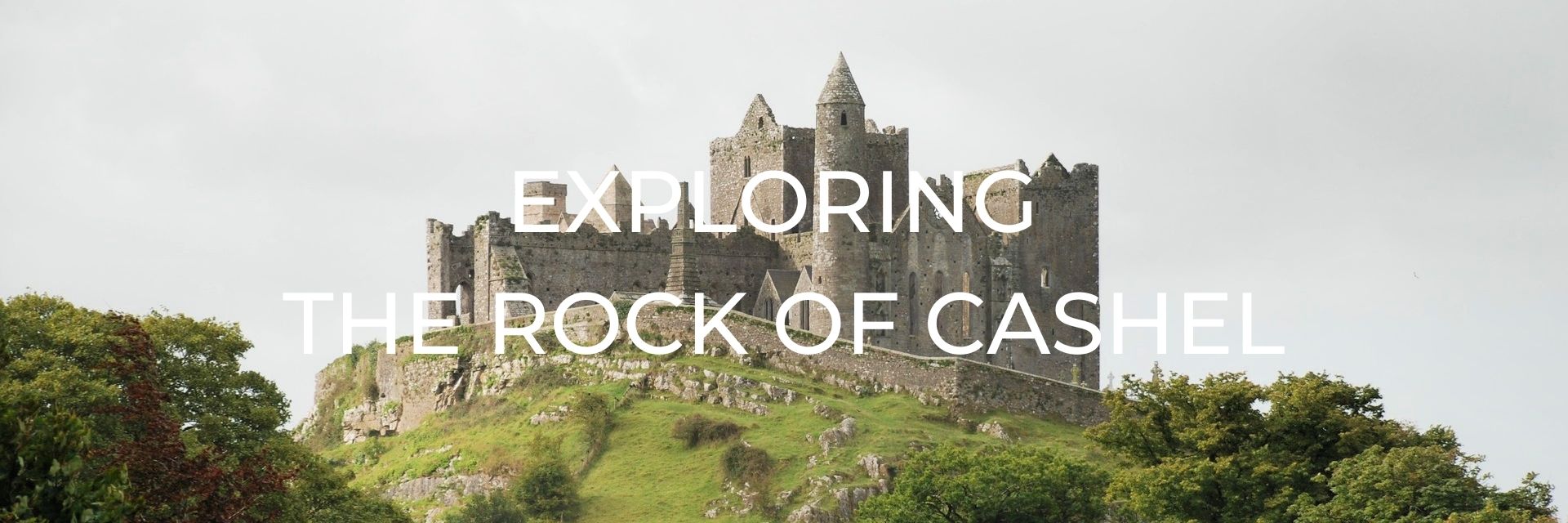
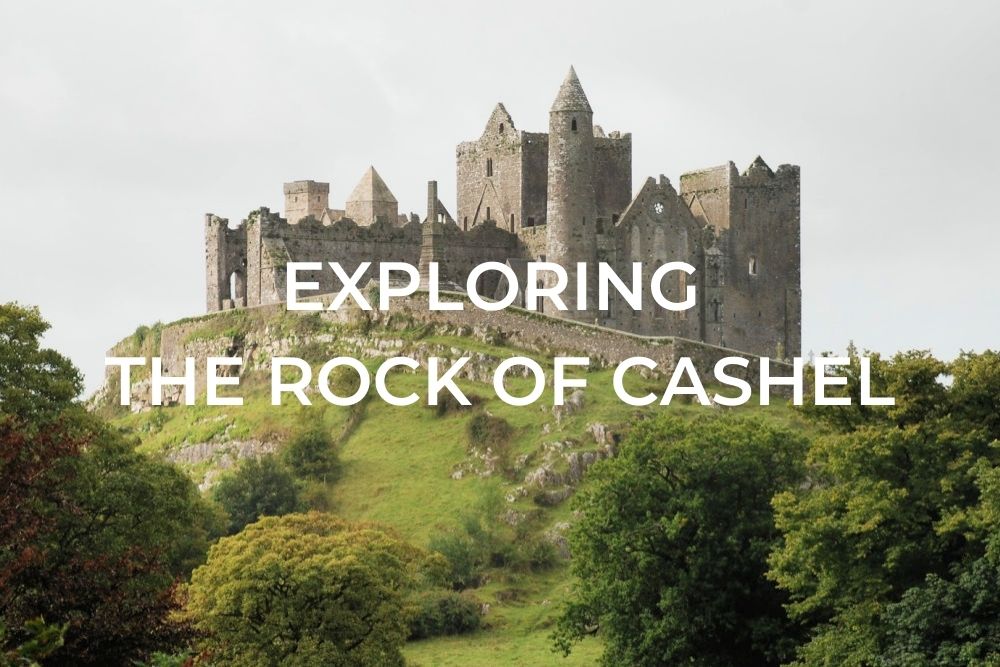
Said to have been formed when the devil bit a big chunk out of the Slieve Bloom Mountains and then spat it out in disgust when he saw St. Patrick getting ready to build a great church, the Rock of Cashel set high on the limestone outcrop in the middle of pasture looks almost like it could have been created that way. In reality, though it was built as any other cashel (or stone fort) in its day- one stone at a time by some very industrious folks.
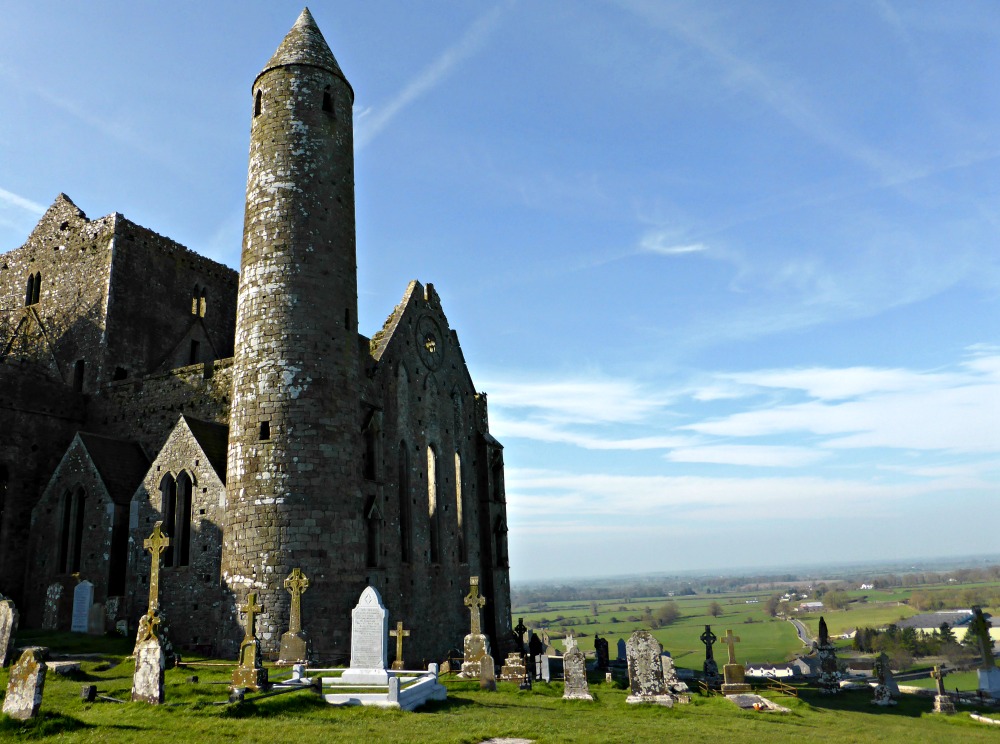
HISTORY OF THE ROCK OF CASHEL
Cashel has long been a place of great significance and once rivaled Tara as a royal seat for the kings of Munster around the 4th century. In 432 AD along came St. Patrick who converted King Aengus to become Ireland’s first Christian ruler. It is said he used the shamrock leaf to illustrate the nature of the Holy Trinity to help with his conversion (now we know why shamrocks are so important to Ireland!). Then along about 1100 AD Murtough O’Brien presented the cashel of the kings to the church, and in 1127 Cormac MacCarthaigh, the King of Desmond, built a little chapel to kick the whole thing off. The chapel still bears his name.
Other significant figures in history that have spent time at Cashel were King Henry II who came here to receive homage from Irish princes, Edward the Bruce held a parliament here, and the first Protestant service in Ireland was held here. Yep, it’s a pretty special place.
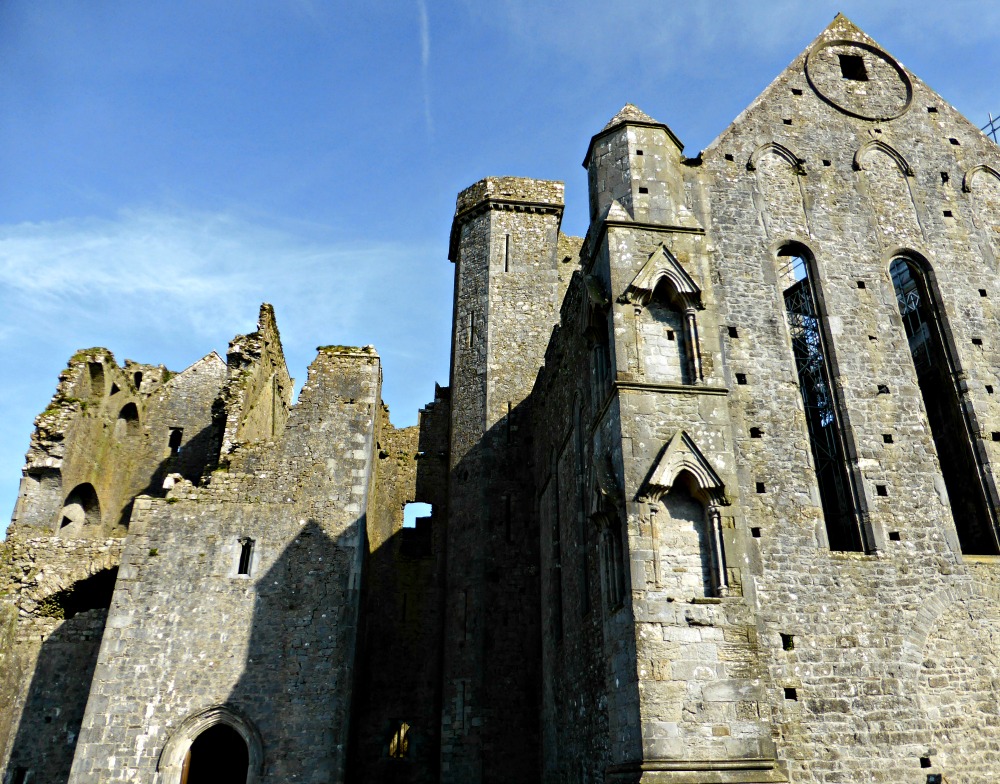
BUILDINGS ON THE ROCK OF CASHEL
The buildings on the Rock of Cashel date mainly from the 12th and 13th centuries and they are wonderful to explore. In addition, the grounds have dozens of beautiful crosses and gravestones that are interesting to wander around and read- and beautiful to photograph.
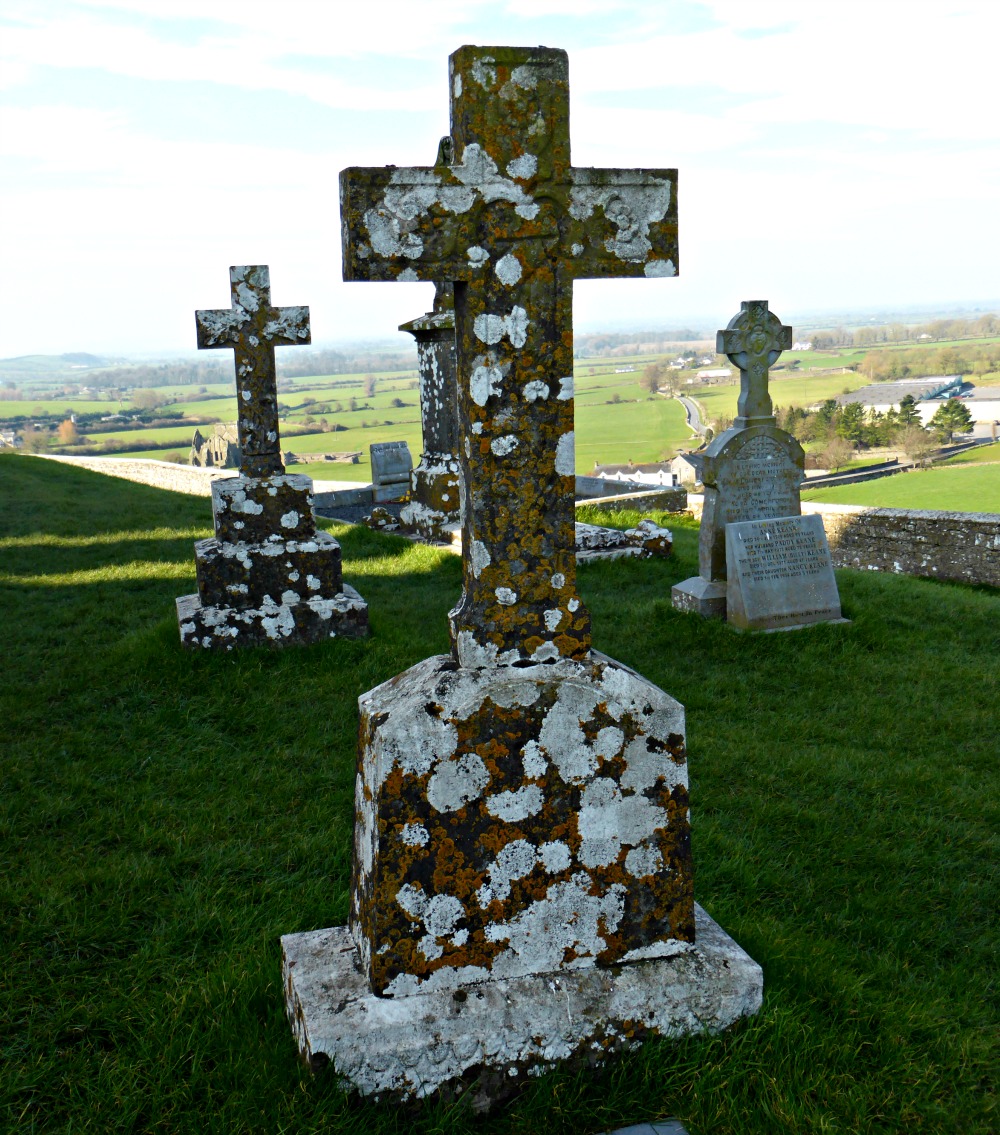
CORMAC’S CHAPEL
Begun in 1127, Cormac’s Chapel is in excellent condition, even today all these hundreds of years later. Built in an Irish Romanesque style it features ornately carved figures of both humans and beasts. It is also said to contain the tomb of Cormac himself- the Bishop King of Munster who ruled in the 12th century.
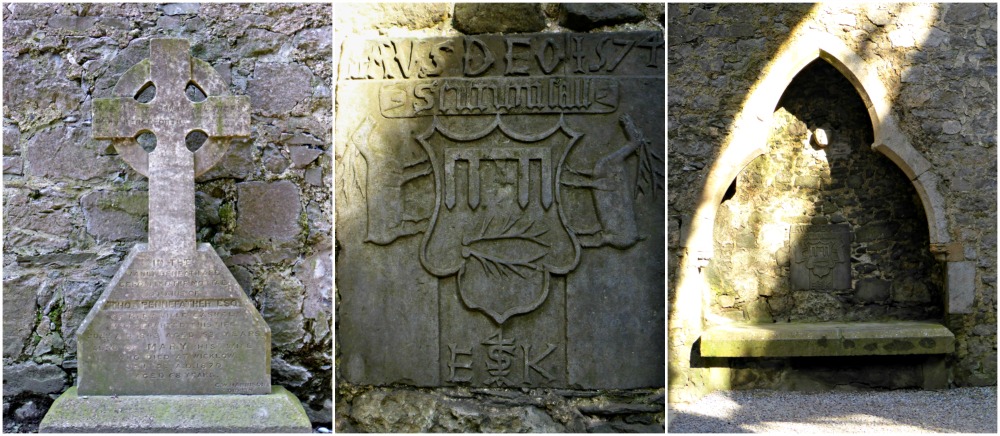
ST. PATRICK’S CATHEDRAL
The largest building of the complex. St. Patrick’s Cathedral features absolutely stunning quatrefoil windows and huge Gothic arches- especially if you catch it with the light shining in them just so. Despite its beauty, it does have a bit of a sinister history.
In one story a man named Gerald Fitzgerald set the cathedral on fire in the 15th century. When asked by King Henry II why he’d done it he replied that he thought the Archbishop was inside! Later in 1647, Lord Inchiquin besieged the town so the townspeople fled to the cathedral for sanctuary- but he set it on fire with them trapped inside. Certainly not good stories from the Rock of Cashel’s history.
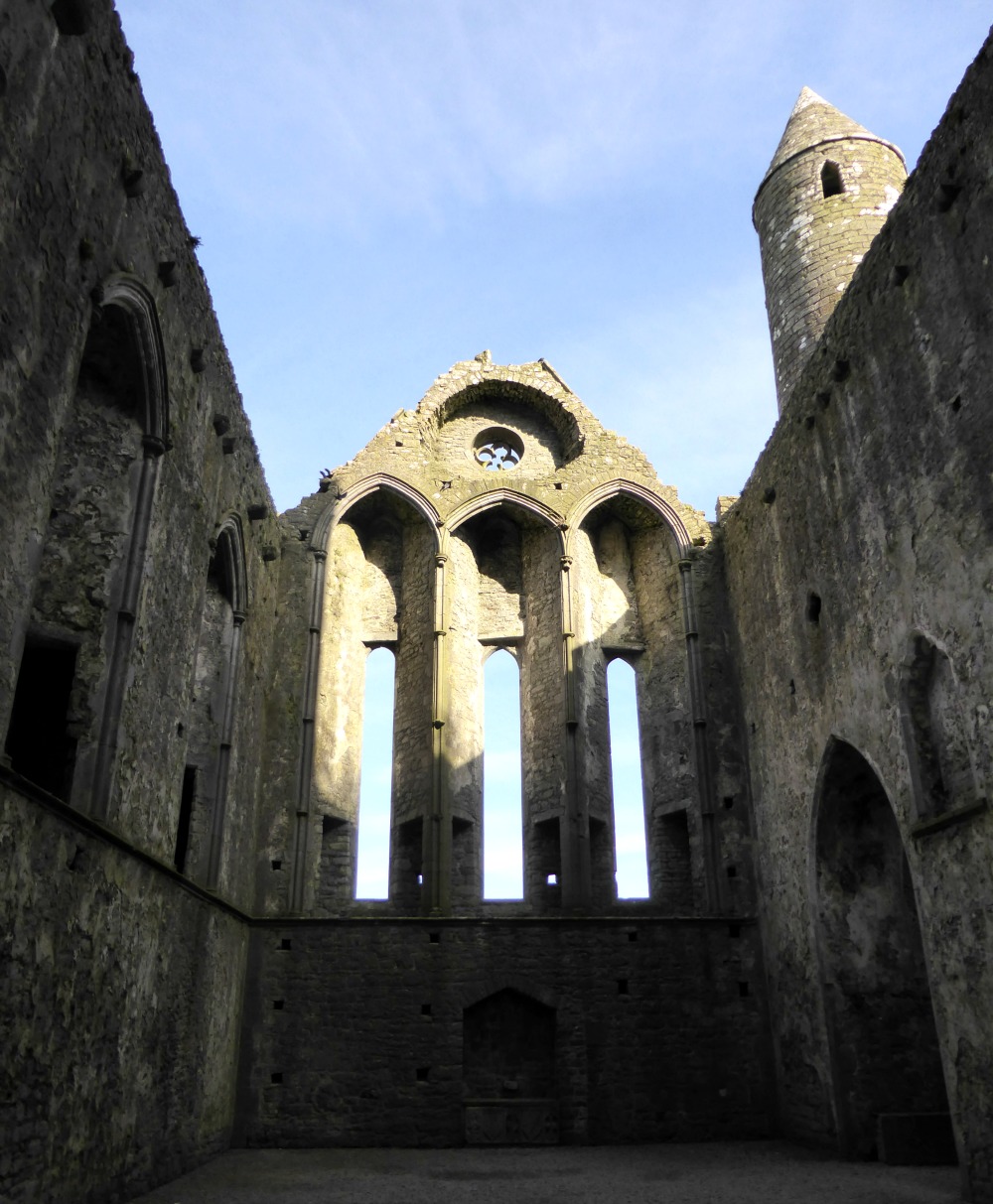
ROUND TOWER
Probably the earliest structure on the site, the Round Tower is well preserved, but unfortunately inaccessible. The entrance to the door is about 3.5m (12ft) above the ground and there didn’t look to be any way in to be able to climb the tower, much to L’s dismay. Actually, I would have loved to climb to the top too for, what I’m sure are, amazing views.
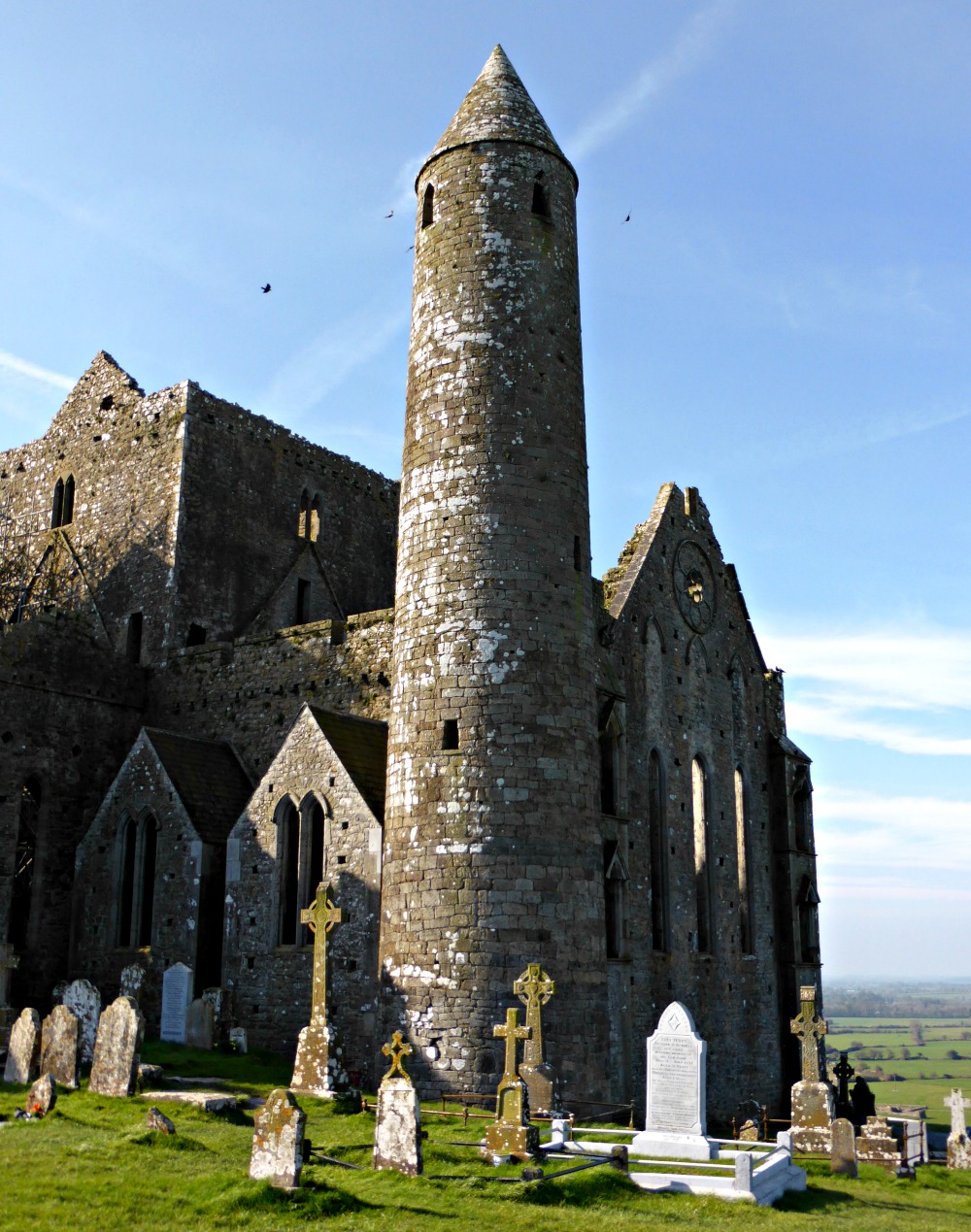
HALLS OF VICARS
Our last stop was the 15th-century residence for the privileged members of the choir of the day- the Hall of Vicars. Today this building is a museum that houses period furniture, tapestries, and two very important relics- St. Patrick’s Cross and Coronation Stone. Interestingly I also read that the base of St. Patrick’s Cross may have been a pre-Christian sacrifice altar.
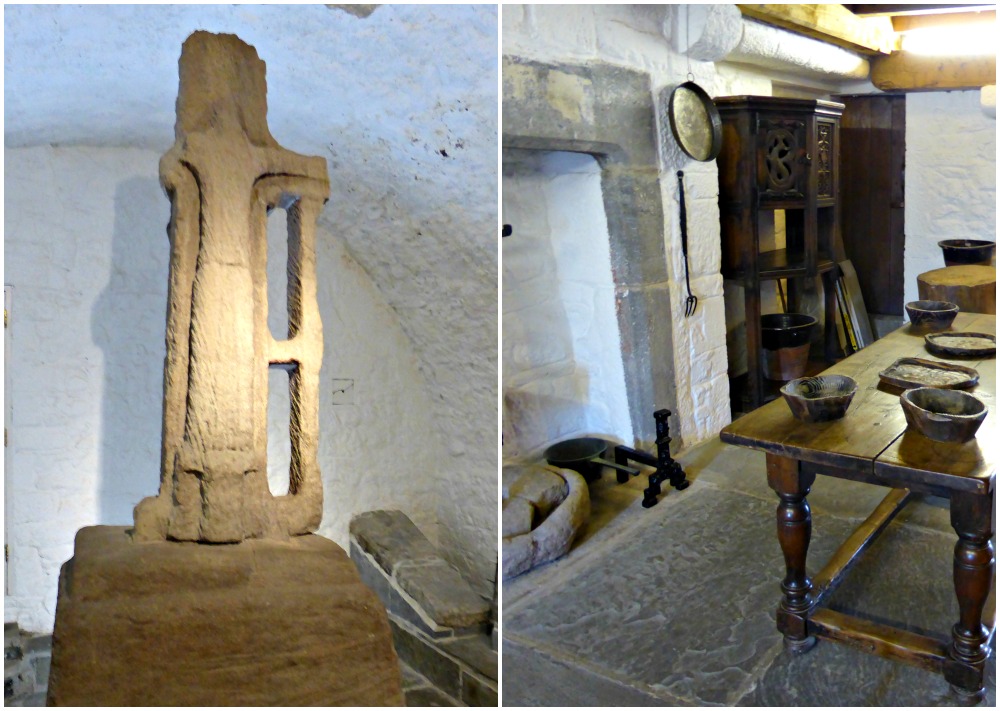
VISITING THE ROCK OF CASHEL
Before our visit, I had seen many photos of the Rock of Cashel and they all left me with the impression that it was going to be an almost surreal experience to climb the high craggy cliffs up into the clouds to visit. In reality though- well it’s not quite that romantic.
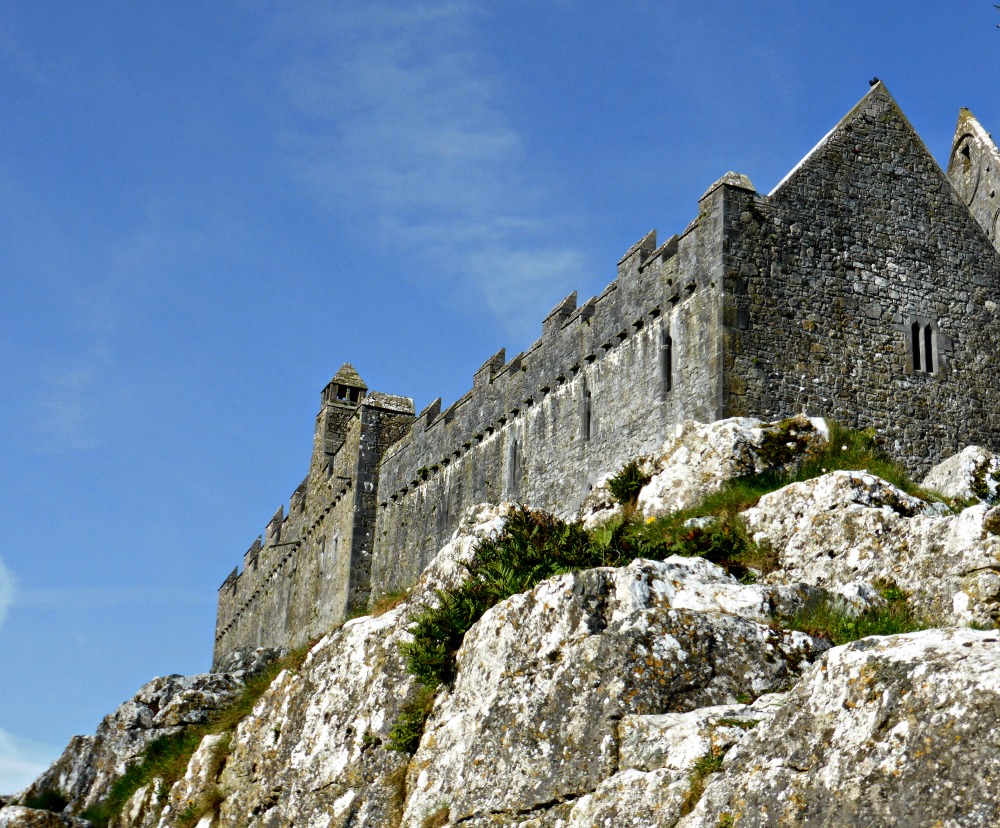
It is most definitely set up on a hill, but the hill is only about 60 m (200 ft) high. From one side it does look rather imposing, but when you drive around the back you will find the effects of tourism. A great parking lot that is big enough to accommodate coaches, little shops, and the toilets. Granted these are all necessities, but isn’t it funny how sometimes you get this picture in your head and then come across things like that and they seem out of place? It is also one of the most popular sights in Ireland with tons of visitors during the high season. I think we were fortunate to visit in March as there weren’t really so many people and the souvenir shops weren’t open yet.
I definitely don’t want to sound like the Rock of Cashel isn’t a worthy site to visit- it absolutely is and I would recommend it to everyone putting together their own itinerary for Ireland. I guess it just struck me how odd all the tourist amenities seemed to be. Maybe I thought we were going to step back into the 13th-century when we visited this site.
For visitor information such as opening hours, admission prices, and location, please visit the Heritage Ireland website. Admission is covered on the Heritage Card which is what we used.
RESOURCES | PLAN YOUR TRIP TO IRELAND
Some of the links in the post above are affiliate links. This means if you click on the link and purchase the item, we will receive an affiliate commission but this does not affect the price to you. Please read our full disclosure policy here.
